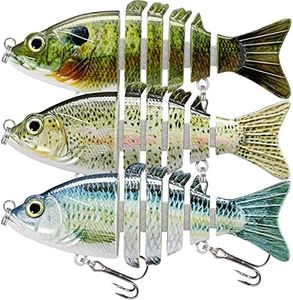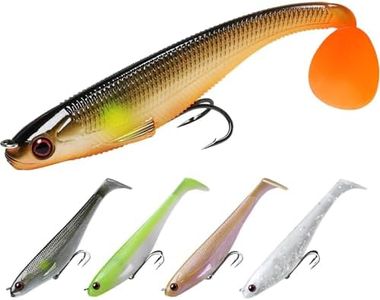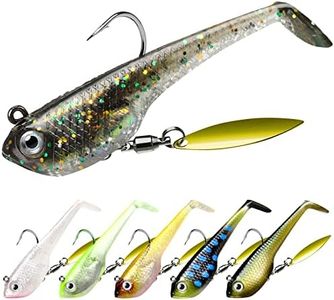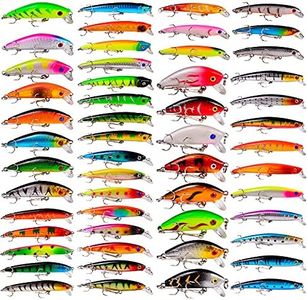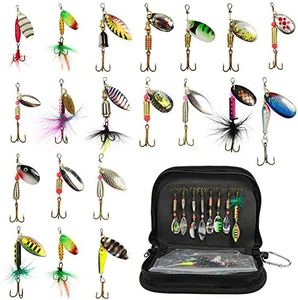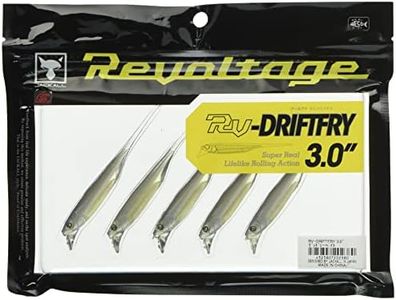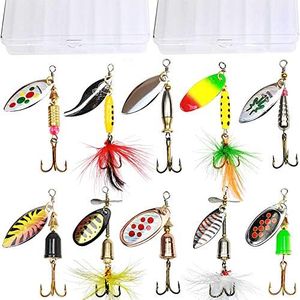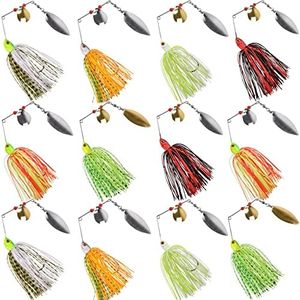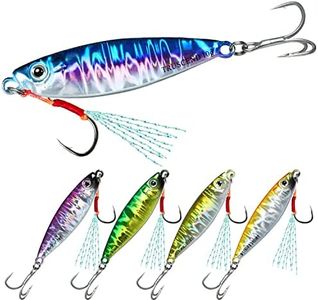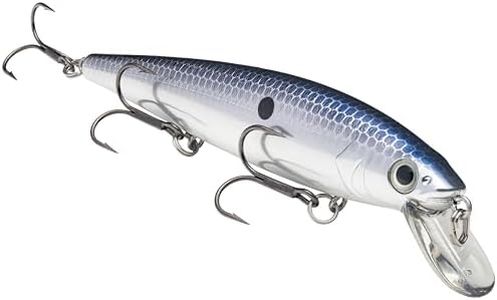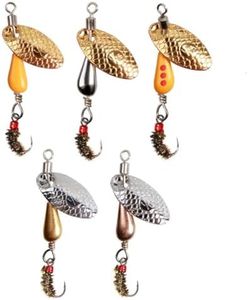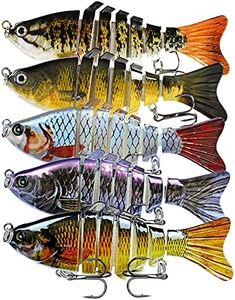We Use CookiesWe use cookies to enhance the security, performance,
functionality and for analytical and promotional activities. By continuing to browse this site you
are agreeing to our privacy policy
10 Best Northern Pike Lures
From leading brands and best sellers available on the web.Buying Guide for the Best Northern Pike Lures
Choosing the right lure for northern pike fishing can seem overwhelming with so many shapes, sizes, and colors on the market. To make a good choice, it's important to understand that northern pike are aggressive and fast predators that respond well to certain lure movements, sizes, and colors depending on the water and weather conditions. The environment you fish in, the time of year, and your own fishing style will help you narrow down the best lure for your needs. By focusing on some key features, you can match the best lure to your local fishing spots and target the sizes of pike you’re aiming for.Lure TypeThe type of lure refers to the basic design and how it moves in the water. Common lure types for northern pike include spoons, spinnerbaits, soft plastics, jerkbaits, crankbaits, and topwater lures. Spoons and spinnerbaits flash and vibrate, which attract pike from a distance, while soft plastics and jerkbaits mimic the movement of prey more subtly. Topwater lures create a lot of surface action and are exciting to use when pike are active near the surface. Choose a lure type that suits the way you like to fish and the conditions you expect—slow-moving waters might be better for soft plastics, while faster, weedy waters are ideal for spinnerbaits or spoons.
Lure SizeLure size is about the overall length and weight of the bait. Larger lures (between 5 and 8 inches, or heavier than 1 ounce) create more vibration and visual attraction, which northern pike often respond to, especially if they’re big fish. Smaller lures (3–5 inches, lighter than 1 ounce) might work better in heavily fished areas, or if the pike seem hesitant. Match the lure size to both the average size of the pike in your waters and the typical prey size in the area—if smaller fish are common, don’t be afraid to downsize your lure.
ColorThe color of the lure plays a major role in how visible and attractive it is in different water conditions. Bright, flashy colors like chartreuse, orange, or silver are great for murky or stained water, while more natural, subtle colors like green, brown, or white mimic real prey and work well in clear water. If you’re unsure, start with a natural color and try something brighter if you’re not getting bites. Matching color to the environment and the weather (darker colors on cloudy days, light colors on sunny days) can also improve your chances.
ActionAction describes how the lure moves through the water. Some lures wobble or wiggle, others dart quickly or sink slowly, while some spin or vibrate due to built-in hardware. Fast, erratic actions can trigger aggressive strikes from active pike; on slower days, a steady, gentle movement may be better. If you’re fishing in cold water or when pike seem lazy, choose a lure with a slower, subtle action. If the fish are aggressive, a lure that moves quickly or erratically might work best.
DurabilityDurability refers to how well a lure holds up to repeated attacks from northern pike, which are known for their sharp teeth and strong bites. Lures made from tough plastics, metals, or with reinforced hooks will last longer. If you fish in areas with a lot of underwater obstacles or catch many pike on a trip, choosing a more durable lure saves you time and frustration. If you're just getting started, opt for lures that are known to handle wear and tear well.
Hook Type and SharpnessThe hooks on your lure are what will ultimately catch the fish, so their type and sharpness are crucial. Treble hooks are common and give a good chance of hooking up, while single hooks can be better for releasing fish safely. No matter the type, sharp hooks increase your success rate, especially with the bony mouths of pike. Always check hook sharpness and consider upgrading if the factory hooks don’t seem sturdy or sharp enough for regular pike fishing.
